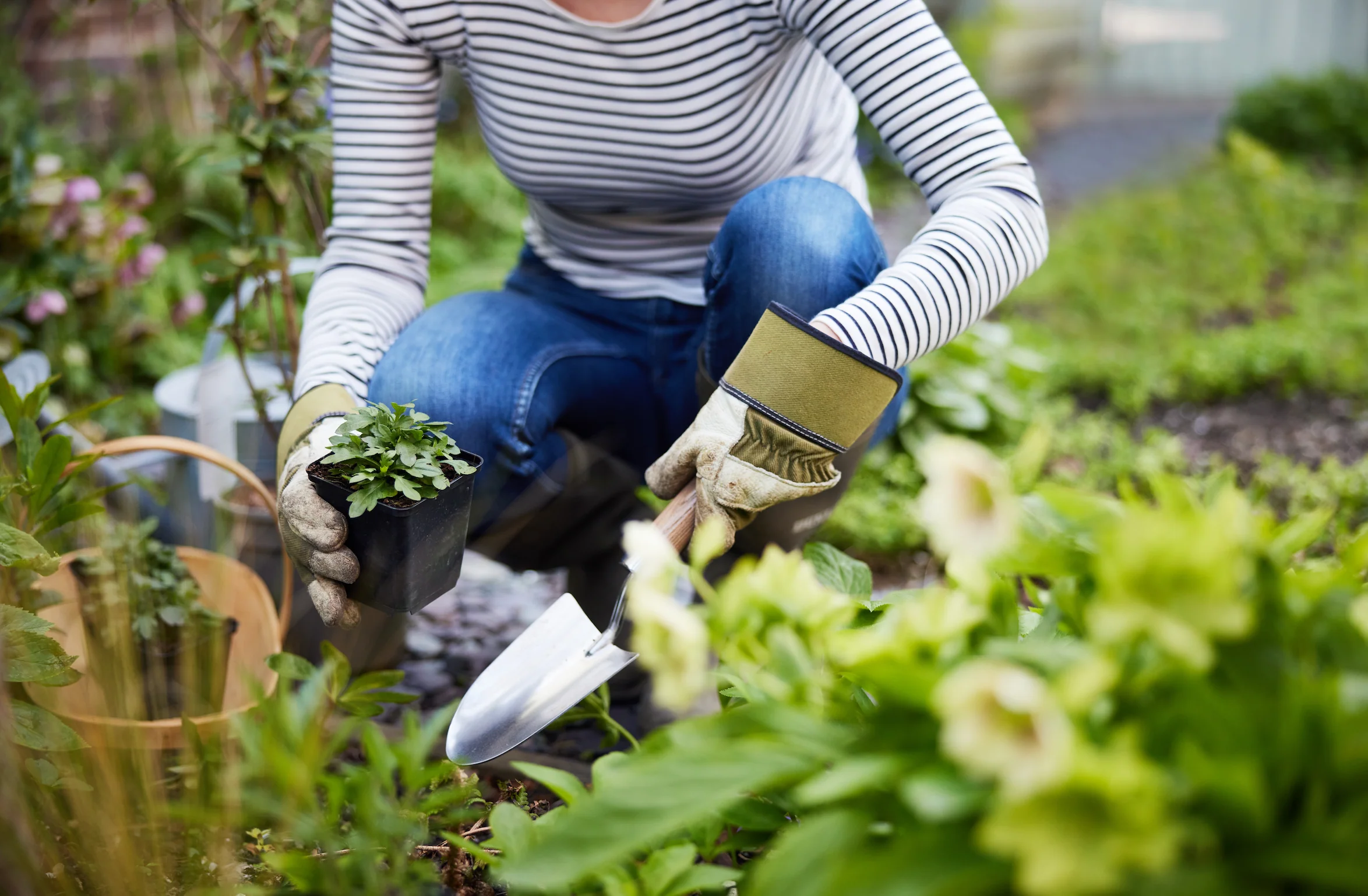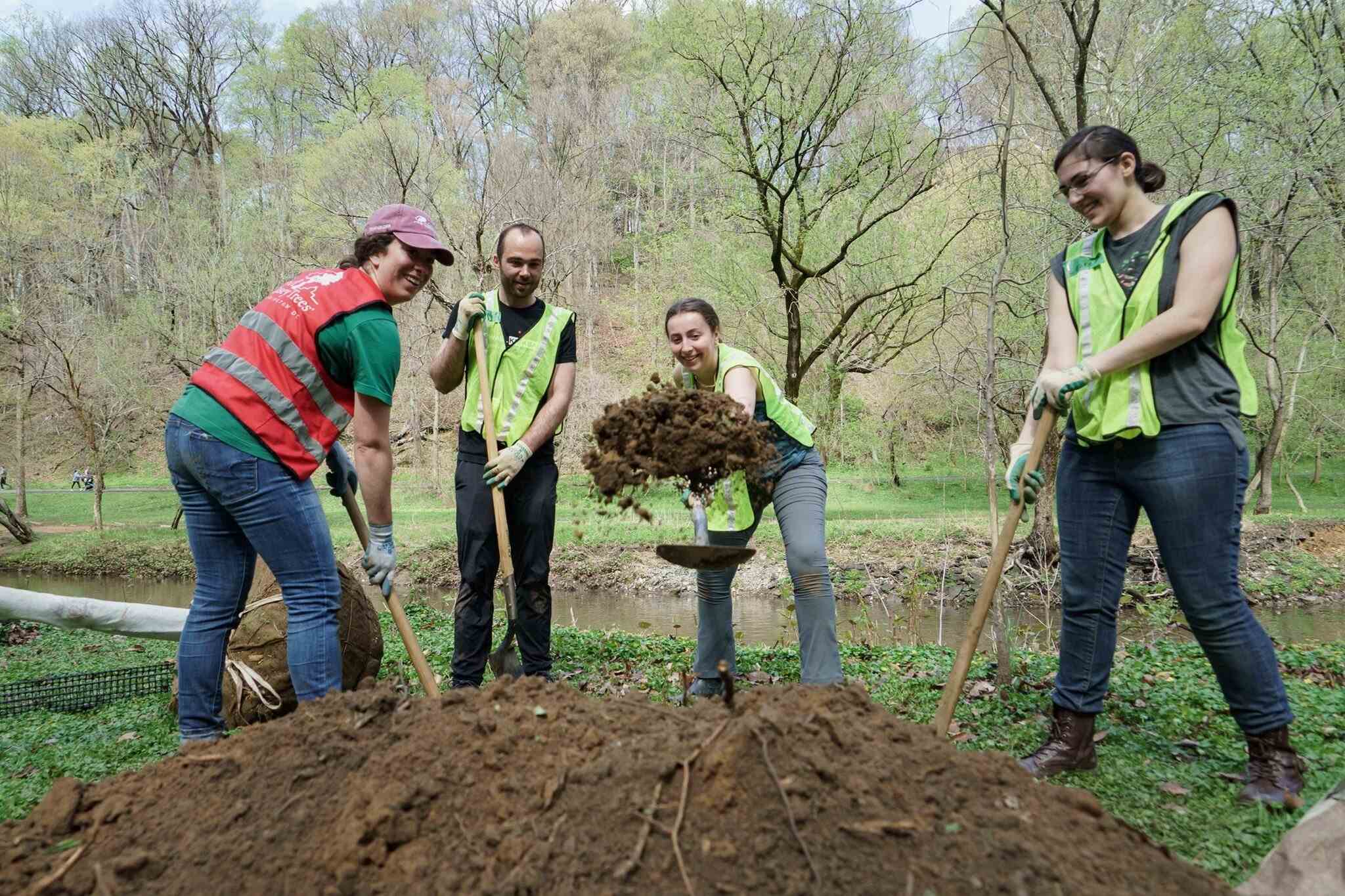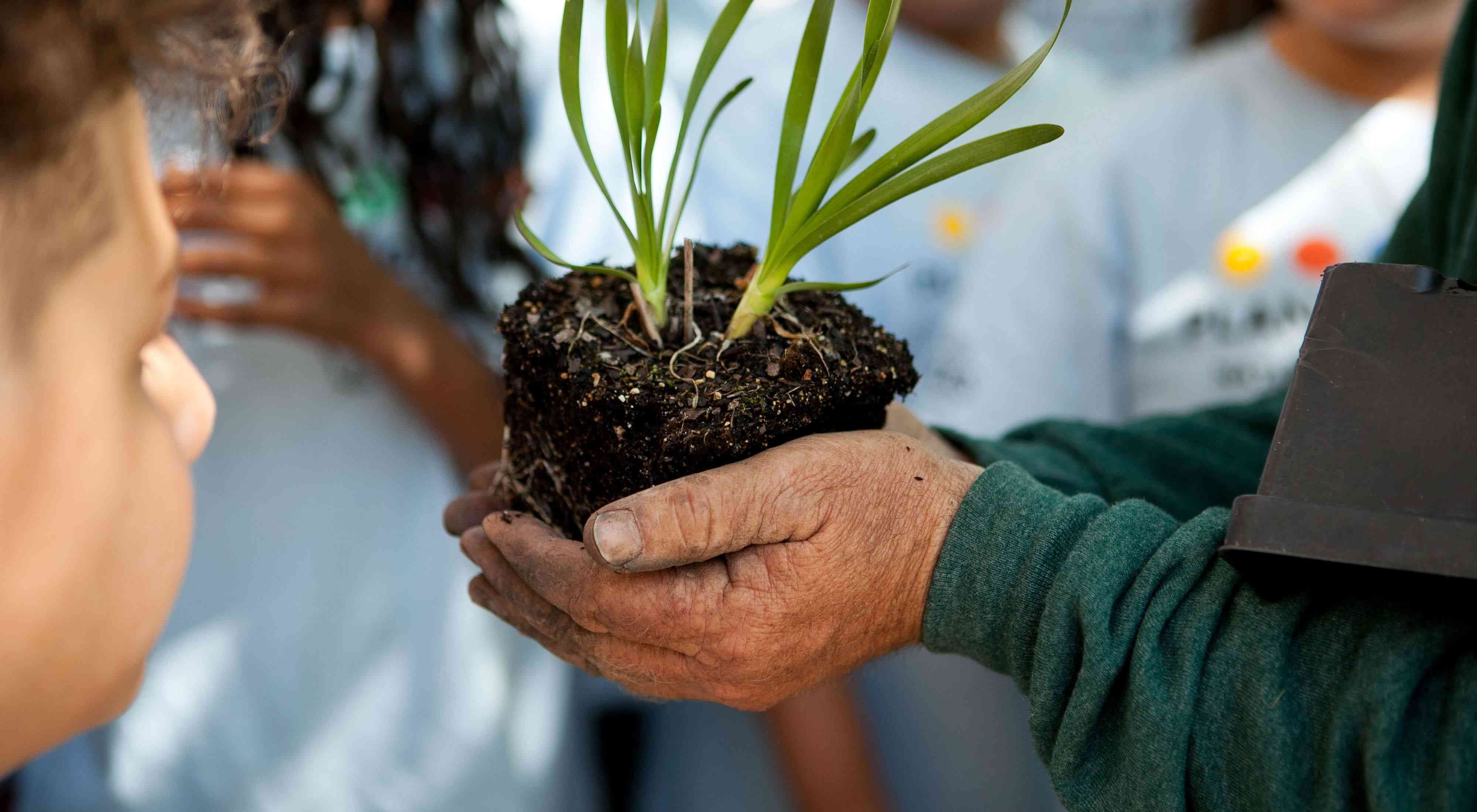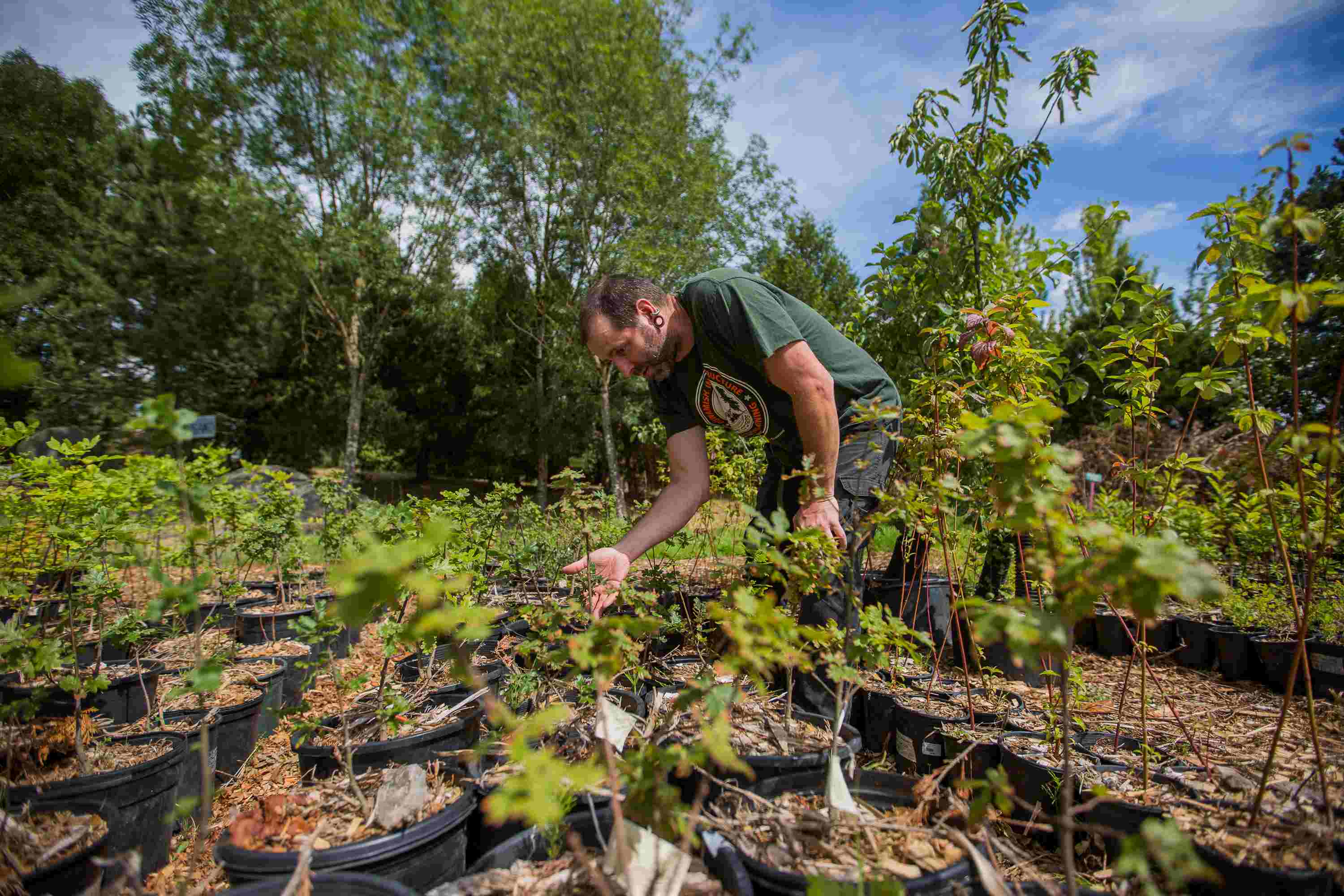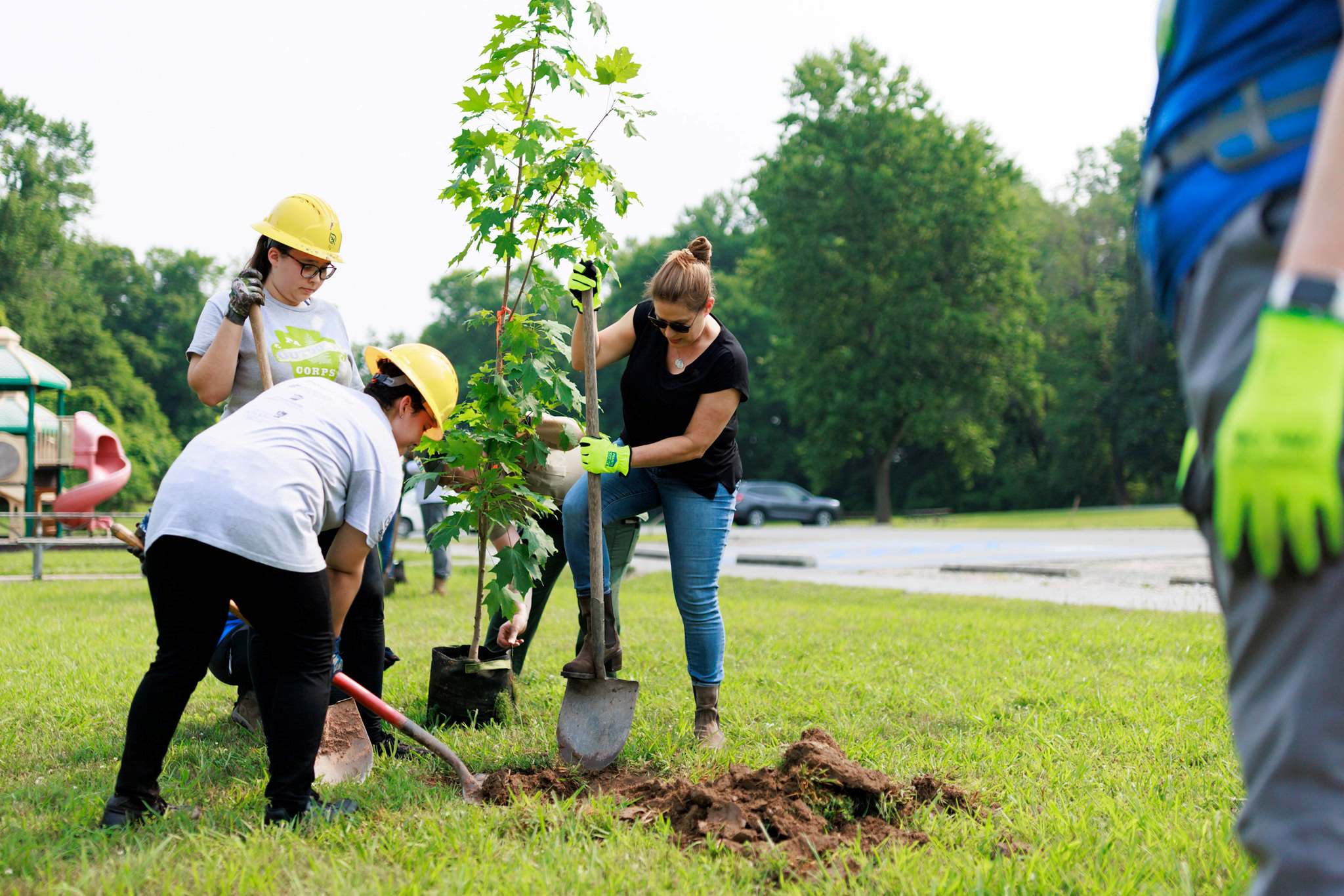Home>Gardening Basics>Understanding Soil>What Planting Zone Is NYC


Understanding Soil
What Planting Zone Is NYC
Modified: January 22, 2024
Discover the best planting zone for NYC and gain a comprehensive understanding of soil types. Plan your gardening with precision using our expert guidance.
(Many of the links in this article redirect to a specific reviewed product. Your purchase of these products through affiliate links helps to generate commission for Chicagolandgardening.com, at no extra cost. Learn more)
Table of Contents
What Planting Zone Is NYC
When it comes to gardening and planting, understanding the climate and growing conditions of your region is crucial. In the case of New York City (NYC), it falls within the USDA Plant Hardiness Zone 7b. This planting zone designation provides valuable information for gardeners to determine which plants are best suited for the area.
The USDA Plant Hardiness Zone Map is a widely-used tool that divides the United States into different planting zones based on average annual minimum temperatures. These zones help gardeners select plants that can thrive and survive in specific temperature ranges. The map is divided into color-coded zones, with each zone representing a 10°F difference in average minimum temperatures compared to adjacent zones.
For NYC, being in Zone 7b means that the average annual minimum temperature ranges from 5°F to 10°F (-15°C to -12°C). This indicates that the area experiences relatively mild winters compared to colder regions.
Several factors contribute to NYC’s planting zone designation. Firstly, the city benefits from the moderating influence of the Atlantic Ocean, which helps to mitigate extreme temperature fluctuations. Additionally, the urban heat island effect, caused by the concentration of buildings and paved surfaces, can lead to slightly higher minimum temperatures in the city compared to surrounding rural areas.
Knowing the planting zone is essential for selecting suitable plants that can withstand the specific climatic conditions of NYC. In Zone 7b, gardeners can enjoy a wide variety of plants, including perennials, annuals, shrubs, and even some cold-hardy vegetables.
It is important to note that while the planting zone provides a helpful guideline, there are other factors to consider, such as microclimates within the city, soil conditions, and sun exposure. These factors can vary significantly within different neighborhoods and even among individual properties.
In the next sections, we will explore the appropriate plants for NYC’s planting zone and provide some helpful tips for successful gardening in the city.
Introduction
Gardening is a beloved activity for many New Yorkers, providing a therapeutic escape from the bustling cityscape. Whether you have a small balcony garden, a rooftop oasis, or access to community plots, understanding the planting zone of your specific area is essential for successful gardening.
NYC is known for its diverse climate, with hot summers and cold winters. To ensure that your efforts yield beautiful and thriving plants, it is crucial to have a clear understanding of the specific planting zone you are in.
In this article, we will explore what planting zone NYC falls under and what it means for your gardening endeavors. We will delve into the USDA Plant Hardiness Zone Map, discuss the factors that contribute to NYC’s planting zone, and provide valuable insights into the types of plants that thrive in this region.
Whether you are a seasoned gardener or just starting your green-thumb journey, this article will equip you with the knowledge you need to make informed decisions about the plants you choose for your NYC garden.
So, let’s dive in and discover what planting zone NYC belongs to and how it influences your gardening experience!
Understanding Planting Zones
Planting zones are an essential tool for gardeners to determine the suitability of specific plants in their respective regions. These zones are based on the USDA Plant Hardiness Zone Map, which divides the United States and Canada into various climate zones.
The USDA Plant Hardiness Zone Map is created using average annual minimum temperatures as a primary factor. It provides vital information about the climatic conditions of a specific area, helping gardeners identify which plants are most likely to thrive in their region.
Each zone is assigned a unique numerical designation or letter, indicating the range of temperatures that can be expected in that area. For example, Zone 1 represents the coldest regions with average minimum temperatures below -50°F (-45°C), while Zone 13 represents the warmest regions with average minimum temperatures above 60°F (15°C).
The planting zones are further divided into subzones, indicated by an additional letter. These subzones provide more specific temperature ranges within a particular zone.
Understanding your planting zone is crucial because it helps determine the suitability of various plant species. Plants that are well-adapted to a specific zone are more likely to survive and thrive in that particular climate. It also enables gardeners to choose the right time to plant, considering the average frost dates and length of the growing season.
It’s important to note that planting zones are based on historical climate data and can be subject to change due to climate change and other factors. Therefore, it’s always a good idea to stay updated with the latest information and consult local gardening resources for the most accurate and relevant guidance.
Now that we have a basic understanding of planting zones, let’s explore the specific planting zone of NYC and what it means for gardening in the Big Apple.
The USDA Plant Hardiness Zone Map
The USDA Plant Hardiness Zone Map is a valuable tool for gardeners across the United States and Canada. It is used to determine the specific planting zones and provide guidance on which plants are best suited for different regions.
The map was developed by the United States Department of Agriculture (USDA) and is based on average annual minimum temperatures. The map divides the country into 13 main zones, each representing a 10°F difference in temperature. Within each zone, there are also subzones that further narrow down the temperature ranges.
The planting zones are depicted on the map through color coding, making it easy for gardeners to identify their corresponding zone. The colors range from light yellow for Zone 1 (coldest) to dark red for Zone 13 (warmest).
The USDA Plant Hardiness Zone Map is regularly updated to reflect changes in the climate and temperature patterns. The last update occurred in 2012, incorporating data from a 30-year period from 1976 to 2005. This update ensured that the map accurately represented the most recent climate information.
While the USDA Plant Hardiness Zone Map primarily focuses on temperature, it is also influenced by other factors that affect plant growth, such as soil moisture, elevation, and prevailing winds. These factors can vary significantly within a zone and have an impact on the overall gardening conditions in a specific area.
Gardeners can use the USDA Plant Hardiness Zone Map as a starting point to understand the general climate conditions in their region. However, it is important to note that microclimates can exist within a zone due to local variations in factors like sunlight exposure and urban heat island effects.
By utilizing the USDA Plant Hardiness Zone Map, gardeners can make informed decisions about the selection of plants that are best suited for their specific zone. This ensures that the plants have the best chance of thriving and surviving in the given climate conditions.
Now that we have an overview of the USDA Plant Hardiness Zone Map, let’s explore the specific planting zone of NYC and what it means for gardening in the city.
NYC’s Planting Zone
New York City (NYC) falls within the USDA Plant Hardiness Zone 7b. This planting zone designation indicates the average annual minimum temperature range of the area, which helps determine the types of plants that can thrive in NYC’s climate.
Being in Zone 7b, NYC experiences relatively mild winters compared to colder regions. The average annual minimum temperature in Zone 7b ranges from 5°F to 10°F (-15°C to -12°C).
Several factors contribute to NYC’s planting zone designation. Firstly, the city benefits from the moderating influence of the nearby Atlantic Ocean. The ocean helps to regulate temperatures, preventing extreme temperature fluctuations in the city.
Additionally, the urban heat island effect plays a role in determining NYC’s planting zone. The concentration of buildings and paved surfaces in urban areas creates localized heat islands, resulting in slightly higher minimum temperatures compared to surrounding rural areas. This urban heat effect can influence the overall climate within the city.
It’s important to remember that NYC’s planting zone is not the same throughout the entire city. Microclimates can exist within different neighborhoods and even among individual properties. Factors such as proximity to water bodies, altitude, exposure to sunlight, and the presence of trees and green spaces can all contribute to microclimatic variations.
Despite these variations, the general planting zone of NYC provides a valuable guideline for selecting plants that can withstand the climate conditions of the city. In Zone 7b, gardeners have a diverse range of plant options available to them, including perennials, annuals, shrubs, and even some cold-hardy vegetables.
Now that we know NYC’s planting zone, let’s explore the factors that contribute to this designation and understand how they can impact gardening in the city.
Factors Affecting NYC’s Planting Zone
Several factors contribute to the specific planting zone designation of New York City (NYC). These factors, when combined, create a unique climate that influences the types of plants that can thrive in the area. Understanding these factors is essential for successful gardening in the city.
1. Proximity to the Atlantic Ocean: NYC’s location along the coast provides it with a moderating maritime influence. The Atlantic Ocean helps regulate temperature extremes, keeping winters relatively mild and summers cooler compared to inland areas. This oceanic influence contributes to the overall planting zone of the city.
2. Urban Heat Island Effect: The urban environment of NYC, with its abundance of buildings, infrastructure, and paved surfaces, creates what is known as the urban heat island effect. This effect leads to slightly higher temperatures within the city compared to the surrounding suburban and rural areas. The urban heat island effect can impact the microclimates within NYC and influence the specific growing conditions in different neighborhoods.
3. Microclimates: NYC is a city of diverse landscapes, from dense urban areas to green parks and waterfronts. These variations result in microclimates within the city, where localized conditions differ from the broader planting zone. Factors such as elevation, proximity to water bodies, exposure to sunlight, and the presence of vegetation all contribute to these microclimates. Some areas may be warmer, cooler, windier, or shadier than the general planting zone, allowing for a wider range of plant choices within the city.
4. Urban Green Spaces: NYC boasts numerous green spaces, including parks, gardens, and even rooftop gardens. These green spaces can create pockets of cooler and more favorable environments for plants. They can also provide shelter from strong winds and offer opportunities for community gardening and urban agriculture.
Considering these factors, it is important for NYC gardeners to be aware of the variations within the city’s overall planting zone. Understanding the microclimates in different neighborhoods can help in selecting appropriate plants that are better suited to the specific conditions of their area.
By taking into account the proximity to the ocean, the urban heat island effect, microclimates, and the availability of green spaces, gardeners in NYC can make informed decisions about the types of plants that will thrive in their specific gardening environment.
Now that we have explored the factors influencing NYC’s planting zone, let’s move on to discovering the types of plants that are suitable for this region.
Appropriate Plants for NYC’s Planting Zone
New York City’s (NYC) planting zone, classified as Zone 7b, offers a wide array of plant options for gardeners. With its relatively mild winters and diverse microclimates, there are plenty of plants that can thrive in the city’s unique climate conditions.
1. Perennials: Perennials are a popular choice for NYC gardeners. These plants come back year after year, adding beauty and color to the landscape. Some excellent choices for Zone 7b include coneflowers, black-eyed Susans, daylilies, and coreopsis.
2. Annuals: Annual flowers provide quick bursts of color and are perfect for adding seasonal interest to your garden. In Zone 7b, you can enjoy the vibrant blooms of marigolds, zinnias, petunias, and impatiens from spring to fall.
3. Shrubs: Shrubs offer both aesthetic appeal and functionality in a garden. They can provide privacy, serve as windbreaks, and attract pollinators. For Zone 7b, consider planting azaleas, hydrangeas, spirea, or potentilla.
4. Trees: Trees play a vital role in urban environments, providing shade, improving air quality, and acting as a habitat for wildlife. Some tree options suitable for NYC’s planting zone include dogwoods, redbuds, crabapples, and Japanese maples.
5. Herbs and Vegetables: Zone 7b allows for the cultivation of a variety of herbs and vegetables. Consider growing basil, parsley, tomatoes, peppers, lettuce, and broccoli in your NYC garden. With proper care and attention, you can enjoy fresh, homegrown produce.
6. Native Plants: Incorporating native plants into your garden is not only a sustainable choice but also benefits local wildlife. NYC is home to a range of native plant species, such as milkweed, butterfly weed, goldenrod, and New England aster, which support pollinators and create a thriving ecosystem.
When selecting plants for your garden, consider factors such as sunlight exposure, soil conditions, and available space. NYC’s diverse geography means that some areas may have different microclimates, so it’s essential to observe the specific conditions of your location.
Gardening in NYC requires careful consideration of the unique climate and microclimatic variations. Consult with local nurseries or gardening experts to get recommendations tailored to NYC’s planting zone. They can provide guidance on which plants will have the best chance of thriving in your specific neighborhood.
By choosing appropriate plants that are well-suited to NYC’s planting zone, you can create a vibrant and flourishing garden in the heart of the city.
Now that we have explored the suitable plant options for NYC’s planting zone, let’s discover some tips for successful gardening in the city.
Tips for Gardening in NYC’s Planting Zone
Gardening in New York City (NYC) provides a unique set of challenges and opportunities. With careful planning and consideration, you can create a thriving garden in NYC’s planting zone. Here are some tips to help you make the most of your gardening experience:
1. Know Your Microclimate: NYC’s planting zone encompasses diverse microclimates, so understanding the specific conditions in your neighborhood is crucial. Observe the sunlight exposure, wind patterns, and any potential shade from buildings or trees. This knowledge will guide your plant selection and help you create the optimal growing environment.
2. Choose the Right Plants: Select plants that are well-adapted to Zone 7b and suited for the specific conditions of your garden. Consider factors such as sunlight requirements, soil type, and water needs. Choose native species when possible, as they are often better adapted to the local environment and provide habitat for native wildlife.
3. Use Raised Beds and Containers: NYC’s limited space often makes raised beds and containers a practical choice. They allow you to garden in small areas, balconies, or rooftops. Opt for lightweight containers that offer good drainage, and use high-quality soil to ensure proper growth and moisture retention.
4. Maximize Vertical Space: Take advantage of vertical space by using trellises, walls, and fences for climbing plants such as cucumbers, beans, and climbing roses. Vertical gardening not only saves space but also adds visual interest to your garden.
5. Watering Techniques: NYC can experience hot summers, so proper watering is important. Water deeply and less frequently to encourage plant roots to grow deeper. Consider using drip irrigation or soaker hoses to deliver water directly to the root zone, minimizing evaporation and water waste.
6. Implement Sustainable Practices: Embrace sustainable gardening practices by composting kitchen scraps, using organic fertilizers, and practicing water conservation. NYC offers composting opportunities and education programs to help minimize waste and promote a greener city.
7. Community Gardens and Green Spaces: Take advantage of NYC’s community gardens and green spaces. These areas provide opportunities for shared gardening experiences, access to resources, and a chance to connect with fellow gardeners in your neighborhood.
8. Pest and Disease Management: NYC’s dense urban environment can attract certain pests and diseases. Regularly inspect your plants for signs of pests or diseases and take appropriate measures promptly. Practice integrated pest management, which includes using biological controls, organic sprays, and cultural techniques to minimize the use of chemicals.
9. Season Extension: NYC’s planting zone allows for extending the growing season with the use of season-extending techniques such as cold frames, row covers, or protective mulching. These techniques can help you start planting earlier in the spring and extend the harvest into late fall.
10. Seek Local Resources: Take advantage of NYC’s gardening resources such as local nurseries, gardening clubs, workshops, and university extensions. These resources can provide valuable advice, support, and information specific to gardening in the city.
By following these tips, you can overcome the challenges of gardening in NYC and create a lush and thriving garden that brings joy and beauty to your urban environment.
Now that we have explored the tips for gardening in NYC’s planting zone, let’s wrap up our discussion and reflect on the key takeaways.
Conclusion
Gardening in New York City (NYC) can be a rewarding and fulfilling experience, despite the unique challenges of urban gardening. By understanding NYC’s planting zone, which falls under Zone 7b, gardeners can select appropriate plants that thrive in the city’s climate.
The USDA Plant Hardiness Zone Map serves as a valuable tool for determining the planting zones across the United States. NYC’s specific planting zone designation is influenced by factors such as its proximity to the Atlantic Ocean, the urban heat island effect, and the presence of microclimates within the city.
Gardeners in NYC have a wide variety of plant options to choose from, including perennials, annuals, shrubs, trees, herbs, and vegetables. By selecting plants suited to NYC’s planting zone and considering the specific conditions of their microclimate, gardeners can create vibrant and thriving gardens in the heart of the city.
To ensure success, it’s important to know your microclimate, choose the right plants, utilize raised beds or containers for limited spaces, maximize vertical gardening, practice proper watering techniques, implement sustainable practices, and be mindful of pest and disease management. Additionally, taking advantage of community gardens and seeking local resources can provide valuable support and knowledge to enhance your gardening endeavors.
As you embark on your gardening journey in NYC, keep in mind the importance of adapting and learning from the experience. Gardening is not only about cultivating beautiful plants but also about connecting with nature, fostering a sense of community, and reaping the many benefits that come with nurturing a garden.
So, roll up your sleeves, grab your gardening tools, and embrace the beauty of gardening in NYC’s planting zone. With a little time, effort, and knowledge, you can transform your urban space into a thriving oasis of greenery and serenity.

